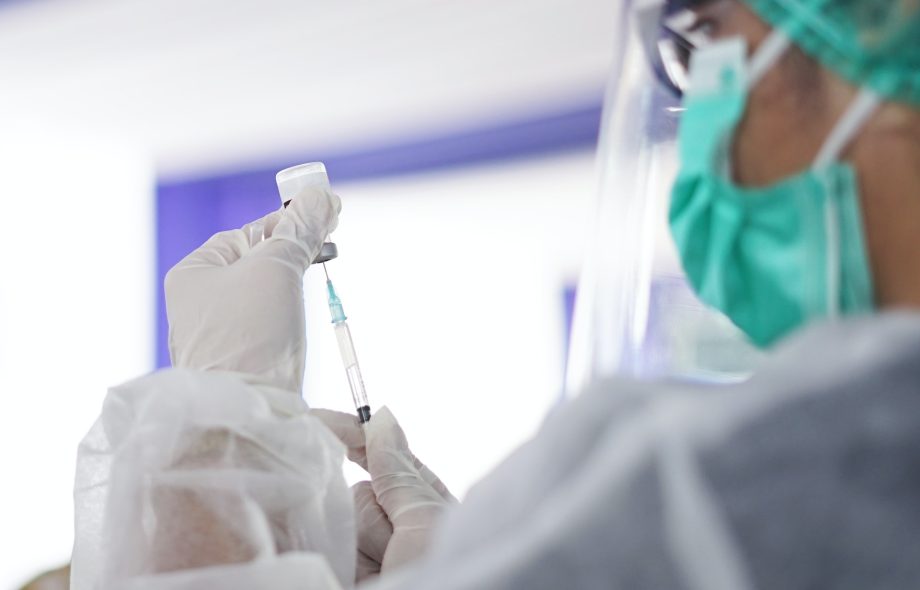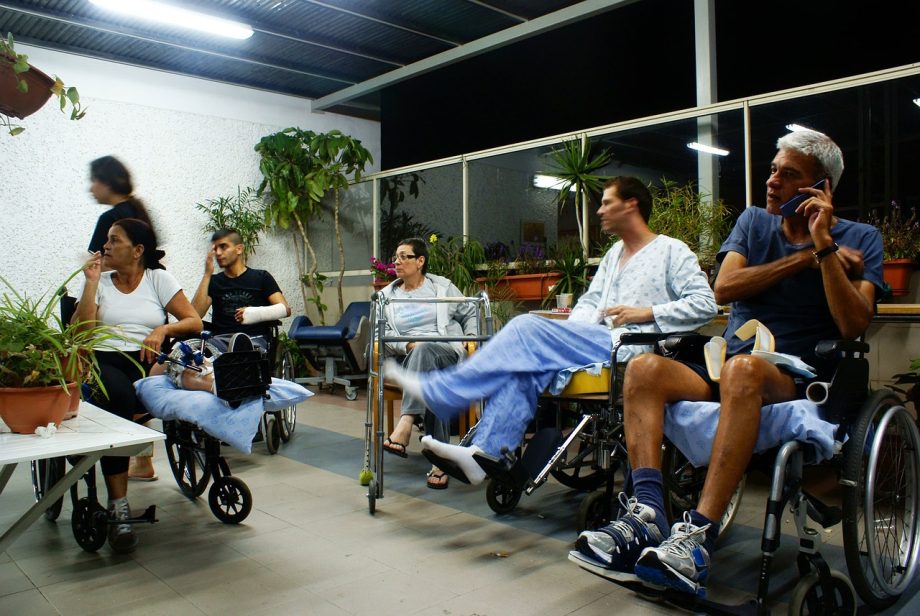If you’re trying to decide between a career in general healthcare or one in mental health, it may help to look at some of the challenges and differences between the two. However, don’t be deterred, because a career in mental health can be just as rewarding as it is challenging.
The challenges
Some of the challenges you face can also double as reasons to become a psychiatric mental health nurse practitioner. If you lack any of the necessary qualifications, you can study these through Marymount University. Their online learning means gaining a qualification can fit around your other commitments.
Understanding something you cannot see
Because working in mental health is more about the mind than the body, this often means having to understand something you cannot see.
Yet many of the symptoms are displayed in physical ways. Working in mental health means looking for and diagnosing the symptoms, but instead of taking blood tests to find illnesses or scans for broken bones, the challenge of finding the problem often lies in talking to your patient and gaining their trust. While working in general healthcare, the health problems you come across in that field seem more tangible. This does not mean mental health problems are any less serious, so it is important to have a strong understanding of the unseen problems which patients experience.
Despite being unseen, they can manifest in other ways.
These ways can include a loss of interest in activities they previously enjoyed, a drastic change in emotions, problems interacting with others, unexplained weight loss, or a change in sleeping patterns where there is no other explanation. This isn't a concrete list, and these will not be immediately obvious. Your patient won't always see the link or may fail to mention these problems.
Sometimes, your patient will have seen a doctor to be tested for physical problems before seeking a diagnosis for a mental health condition.
Knowing how to talk to people
The way you talk to patients can also differ from general healthcare. Often you will need to set aside more time and find a space to talk without distractions. They may also want to share their feelings or concerns, but other patients may need a little coaxing. It is important to help them feel like they are not being forced to share.
Unlike diseases such as cancer, or problems that can be x-rayed such as broken bones, there isn’t always a straightforward fix or a fix which will suit everyone. Although these physical problems can have their own complications where the treatment doesn't always work, the progress or deterioration can be monitored more accurately. When you are working with people whose mind is the cause of the problem, it's more challenging to monitor. Everyone feels and reacts differently. Therefore, it helps to not second-guess their feelings.
Instead, you may achieve more if you keep your questions open-ended, asking them how they feel about different self-care methods rather than insisting on a single treatment. Listen to what they tell you before responding. This is more of a two-way process than simply diagnosing someone with a physical health condition. Although those patients can still need reassurance, this can differ from the encouragement and support you need to provide for those with a mental health issue. There can be a lot more talking and listening involved.
Getting patients to open up
As mental health problems are often something which cannot be seen, patients can feel self-conscious about opening up. There is also stigma attached to mental health issues, despite various campaigns shining a light on this subject and progress being made in the field of treatment.
As a mental health practitioner, it would be your job to reassure patients. It’s important to let them know that nothing they say will sound silly or trivial, and it’s likely that you have heard it before. This can help them feel able to talk and less isolated.
You may find that it takes several sessions with the patient before they let their guard down. So, while it’s important not to make them feel like they must talk about uncomfortable subjects, it’s just as crucial to ensure they know you and other professionals are there if they need to talk. This can make all the difference to them.
Finding ways to coax patients out of their comfort zones
You also need to find ways to coax patients out of their comfort zones. If you compare working in mental health to working in general healthcare, you may find that patients you see as a general healthcare practitioner are more likely to take health advice. For example, if you prescribe a course of treatment for a rash on an arm, then the rash disappears within a couple of weeks, your patient can see the positive results. However, the patients you see while working in mental health cannot monitor these symptoms in the same way. This makes it difficult for them to see whether the treatment you prescribe is having positive results.
Sometimes you may need to coax a patient out of their comfort zone by gently explaining how your suggestions and treatment can help them. If their mental health issues have caused them to reduce social interactions, it can be more difficult for them to get back out into the world. So, you will have to work together and agree on smaller steps to start with, to help your patient feel more comfortable.
This can be a challenge, because if you've previously worked in general healthcare, you could be more accustomed to prescribing treatment to tackle the problem directly or referring patients to a specialist where an operation, a specific course of treatment, or a set number of sessions can cure or improve their condition. Seeing an improvement with some patients who have mental health conditions often takes more time and requires higher levels of patience. The result can feel more rewarding, however.
Distinguishing between different conditions
Another challenge can be distinguishing between different mental health conditions. The symptoms of some of these can be similar and overlap. Some patients can have multiple mental health problems too. As such, the medication and treatment you prescribe must take all of that into account.
Even narrowing down the specific condition your patient has comes with challenges. There are several different types of anxiety disorders, including OCD, various phobias, and panic attacks. Then they are eating disorders such as anorexia and bulimia.
PTSD is another condition you may come across more frequently than you would expect. Many people associate this with soldiers and war experiences, but this isn’t always the case. People can experience PTSD after certain traumatic events in their life which are unrelated to war.
All of these are just the tip of the iceberg and there are many more mental health conditions, which are all complex, and each patient you see will be unique. Although your qualifications will prepare you for this, it is very rare that you will treat two patients who have the exact same symptoms and behave in the same way.
This means you must constantly think about what may be best for each patient based on their specific symptoms and their own unique way of coping. For many mental health practitioners, this at least keeps the job varied and interesting for them. Although it may be a challenge, it’s also something which draws them into the profession.
Other differences
There are several other differences between working in mental health and general healthcare.
Focusing on the mind more than the body
Of course, one of the major differences which we’ve briefly mentioned is that mental health focuses more on the mind than the body. However, this doesn’t mean that the two won't overlap. Conditions such as anorexia or bulimia, although classed as mental health issues, can have a detrimental effect on the patient’s body. To treat them in a way which encourages them to eat and regain weight after a dramatic loss, you need to help them resolve the root problems.
Furthermore, when dealing with patients who have anxiety or depression, exercise might help. A lack of exercise can often make problems feel worse. So, although this isn’t a cure as such, it can often alleviate symptoms. Because depression and anxiety can cause your patients to withdraw from social events and spend more time alone, this can lead to physical problems if they don’t get enough exercise or time outdoors.
As a mental health practitioner, your focus is on the mental health of your patients but, as you can see, this often overlaps with physical health. Your experience in general healthcare can prepare you in some ways for the transition to becoming a mental health practitioner.
Sometimes you may become more invested in your patients
Some patients under your care may have lifelong conditions. This means that you, as a mental health nurse, must focus on how to manage rather than cure a condition. It is rewarding to see them thrive and live their lives in the best way possible. However, it can also be challenging for those who have worked in general healthcare and associate positive results with a cure.
For those patients whose condition you can only manage but not cure, you will often see them regularly. It is natural to become more invested in them professionally. You will share in their experiences and help them to navigate the ups and downs of their specific medical condition.
You might also help them deal with any physical health conditions they experience. Although you won’t be their primary practitioner for these, you will often support them through the changes in ways their general health practitioner either cannot or does not have the time to do.
This means you get to know your patients better than you might if you were working in general healthcare. It can make it difficult to switch off at the end of your working day too. Equally, when you do make progress or see small successes, these feel more rewarding and give you something to feel proud of.
Is it worth switching to a career in mental health?
Although there are various challenges to working as a mental health nurse, it can be a rewarding career. If you are already accustomed to working in general healthcare, you will understand that the challenges make the role what it is. Overcoming these and seeing positive results is just one of the many things which makes your job feel rewarding.
Likewise, when switching your career to focus on mental health, it is easy to find this just as rewarding. You can make a positive change in patients' lives, helping them feel listened to, and to validate their thoughts and feelings. You also get to be part of the positive change in removing the stigma from mental health. While things have progressed and it is no longer the taboo subject it used to be, you get to be part of the ongoing change and improvement.
Your role will also be varied, dealing with individuals and groups of people, encouraging them to open up and contribute to discussions.
The switch to mental health also widens your options. You can choose to work in a variety of settings, from behavioural health clinics to mental health hospitals. You will also help to fill the demand for mental health nurses. There are so many patients on waiting lists, so by choosing this as a career, you can help some of them sooner rather than later. During your career working in general healthcare, you may have treated patients who have been waiting for a while, but some patients with mental health problems do experience excessively long waiting times. There could be several reasons for this, including mental health being taken less seriously than physical health. Yet, as we’ve already mentioned, mental and physical health can often overlap. That’s why it’s crucial to treat both. By switching from general health care to mental health care, you can help become part of this positive change.











